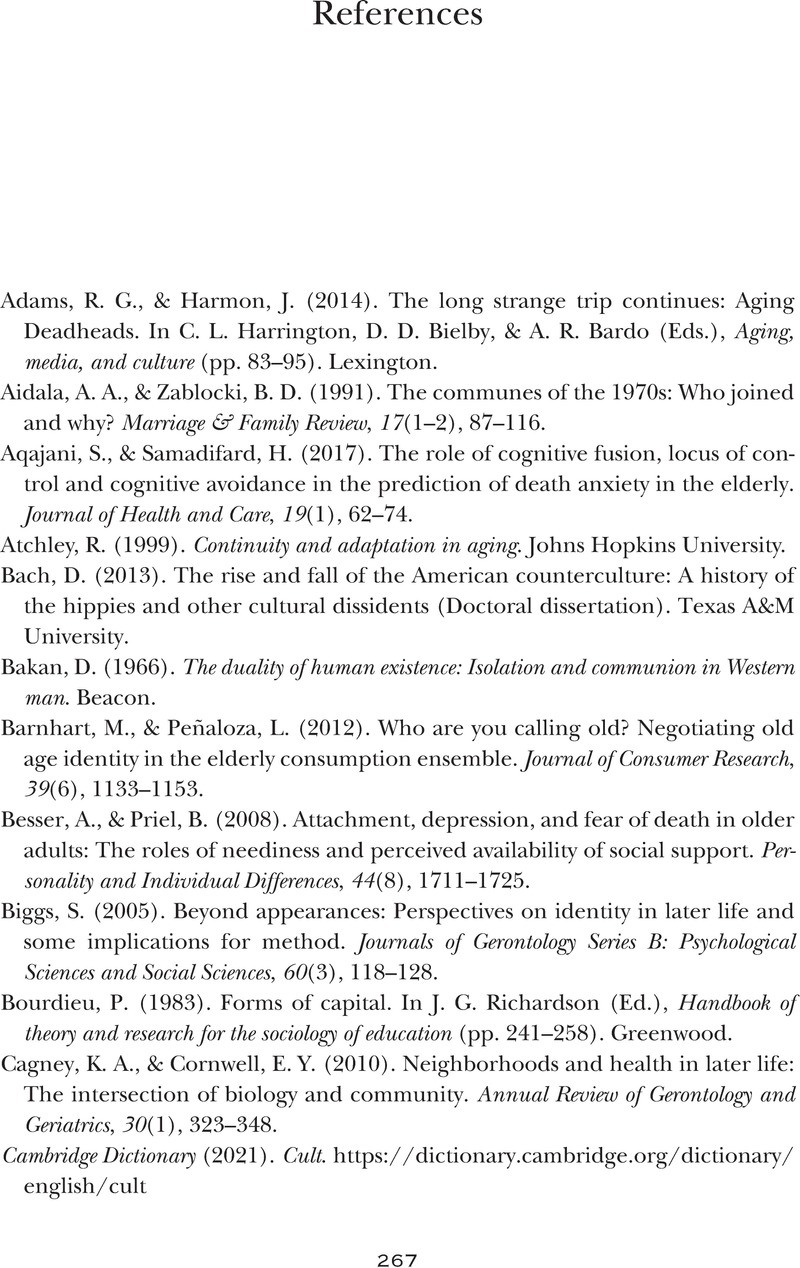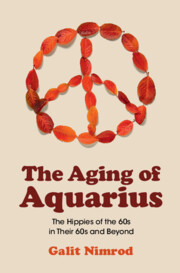Book contents
- The Aging of Aquarius
- The Aging of Aquarius
- Copyright page
- Dedication
- Contents
- Figures
- Tables
- Acknowledgments
- Abbreviations
- Chapter 1 Introduction
- Chapter 2 The Hippies
- Chapter 3 The Farm
- Chapter 4 Once a Hippie, Always a Hippie
- Chapter 5 Still Changing the World
- Chapter 6 Sex, Drugs, and Rock-n-Roll?
- Chapter 7 The Aging of the New Agers
- Chapter 8 Lifelong Community
- Chapter 9 Alternative End of Life
- Chapter 10 Aging Differently
- Book part
- Notes
- References
- Index
- References
References
Published online by Cambridge University Press: 15 December 2022
- The Aging of Aquarius
- The Aging of Aquarius
- Copyright page
- Dedication
- Contents
- Figures
- Tables
- Acknowledgments
- Abbreviations
- Chapter 1 Introduction
- Chapter 2 The Hippies
- Chapter 3 The Farm
- Chapter 4 Once a Hippie, Always a Hippie
- Chapter 5 Still Changing the World
- Chapter 6 Sex, Drugs, and Rock-n-Roll?
- Chapter 7 The Aging of the New Agers
- Chapter 8 Lifelong Community
- Chapter 9 Alternative End of Life
- Chapter 10 Aging Differently
- Book part
- Notes
- References
- Index
- References
Summary

- Type
- Chapter
- Information
- The Aging of AquariusThe Hippies of the 60s in Their 60s and Beyond, pp. 267 - 274Publisher: Cambridge University PressPrint publication year: 2022



